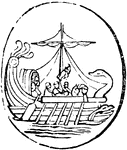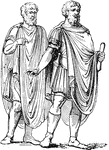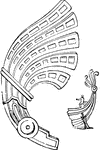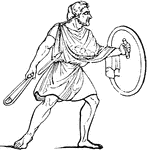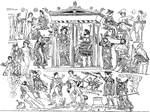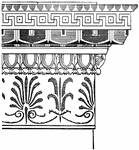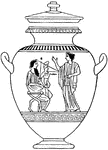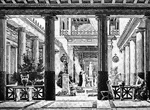
Herculaneum
"In the following we have back and front views of the heads of statues from Herculaneum, on which we…
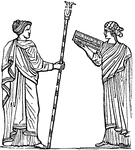
Mitra
"An eastern head-dress, sometimes spoken of as a characteristic of the Phrygians. It was also the name…
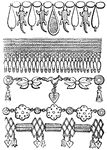
Monilia
"A necklace. Necklaces were worn by both sexes among the most polished of those nations which the Greeks…

Ocrea
"A greave, a leggin. A pair of greaves was one of the six articles of armour which formed the complete…

Ocrea
"A greave, a leggin. A pair of greaves was one of the six articles of armour which formed the complete…
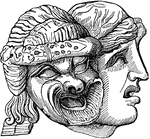
Persona
"A mask. Masks were worn by Greek and Roman actors in nearly all dramatic representations. This custom…

Persona
"A mask. Masks were worn by Greek and Roman actors in nearly all dramatic representations. This custom…
Pons Cestius
"A bridge. As the rivers of Greece were small, and the use of the arch known to them only to a limited…

Pons Aelius
"A bridge. As the rivers of Greece were small, and the use of the arch known to them only to a limited…
Pons Ariminum
"A bridge. As the rivers of Greece were small, and the use of the arch known to them only to a limited…
Pons Trajan
"A bridge. As the rivers of Greece were small, and the use of the arch known to them only to a limited…

Stadium
"A Greek measure of length, and the chief one used for itinerary distances. It was equal to 600 Greek…

Greek Chariot
A two wheeled car or vehicle used in various forms by the ancients in war, in processions, and for racing.
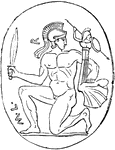
Diomede
"The following cut, from an ancient gem, represents Diomede in the act of bearing away the Palladium."…

Greek soldier
"The early Greeks used a very short sword, as may be seen from the preceding cut. The ancient Homeric…
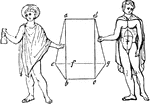
Chlamys
"The chlamys was a species of cloak or scarf, oblong instead of square, its length being generally about…
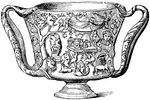
Carchesium
"The carchesium was a beaker, or drinking-cup, which was used by the Greeks in very early times. It…

Greek tripod
"When tripods are said to be given in a present, or as prizes, vases or large bowls supported on three…

Thrones
"Thrones, a throne, is a Greek word, for which the proper Latin term is Solium. This did not differ…
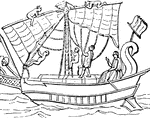
Greek Boat
"The masts were usually taken down when the vessel arrived in port, and raised again when it was about…
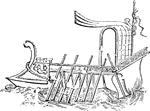
Ship with rudder
"The following cut represents a ship with its rudder. The pole by which it is fastened to the ship's…
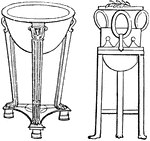
Tripos
"Tripos, a tripod, i.e. any utensil or article of furniture supported upon three feet. More especially,…
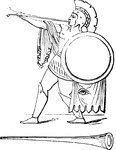
Roman trumpet
"There appears to have been no essential difference in form between Greek and Roman or Tyrrhenian trumpets.…

Litmus
"This instrument was long, and curved at the end. From the similarity of form the original staff received…

Trochus
"Trochus, a hoop. The Greek boys used to exercise themselves, like ours, with trundling a hoop. It was…
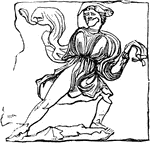
Tunica
"Tunica, an under-garment. Greek. The chiton was the only kind of under-garment, worn by the Greeks.…

Tunica
"Tunica, an under-garment. Greek. The chiton was the only kind of under-garment, worn by the Greeks.…
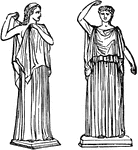
Tunica
"Tunica, an under-garment. Greek. The chiton was the only kind of under-garment, worn by the Greeks.…

Tunica
"Tunica, an under-garment. Roman. The Tunica of the Romans, like the Greek chiton, was a woollen under…

Curved buccina
"The buccina is curved for the convenience of the performer, with a very wide mouth, to diffuse…
Straight buccina
"A copy of an ancient sculpture taken from Blanchini's work, it still retains the original form of the…

Greaves and shield
"Represents the interior view of a bronze shield and a pair of greaves. These greaves are made right…

Umbraculum
"Umbraculum, Umbella, a parasol, was used by Greek and Roman ladies as a protection against the sun.…

Platted hair
"The mode of platting the hair, and then fastening it with a pin on a needle, is shown in the annexed…
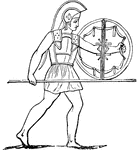
Greek with shield
"In the Homeric times, the Greeks used a belt for the sword, and another for the shield. These passed…

Cistophorus
The front of a Greek silver coin weighing on the average around 193 grains, first issued by the kings…
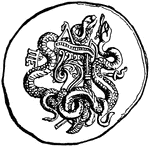
Cistophorus
The back of a Greek silver coin weighing on the average around 193 grains, first issued by the kings…

George I, King of Greece
George I (born Prince William of Schleswig-Holstein-Sonderburg-Glücksburg; 24 December 1845 – 18…
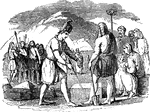
Founding of Argos
"Navigation for the purpose of commerce, and the art of writing, are said to have originated with the…
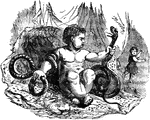
Young Hercules
"Hercules, a Theban prince, was another of the descendants of Pelops. The numerous and extraordinary…
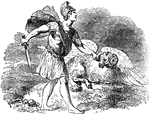
Phryxsus and ram
"When Phryxsus arrived in Colchis, he sacrificed his winger ram to Jupiter, in acknowledgement of the…
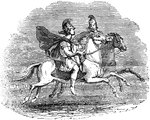
Theseus and Helen
"In the year 1234 B.C., Theseus came to the throne of Athens. He was one of the most renowned characters…

